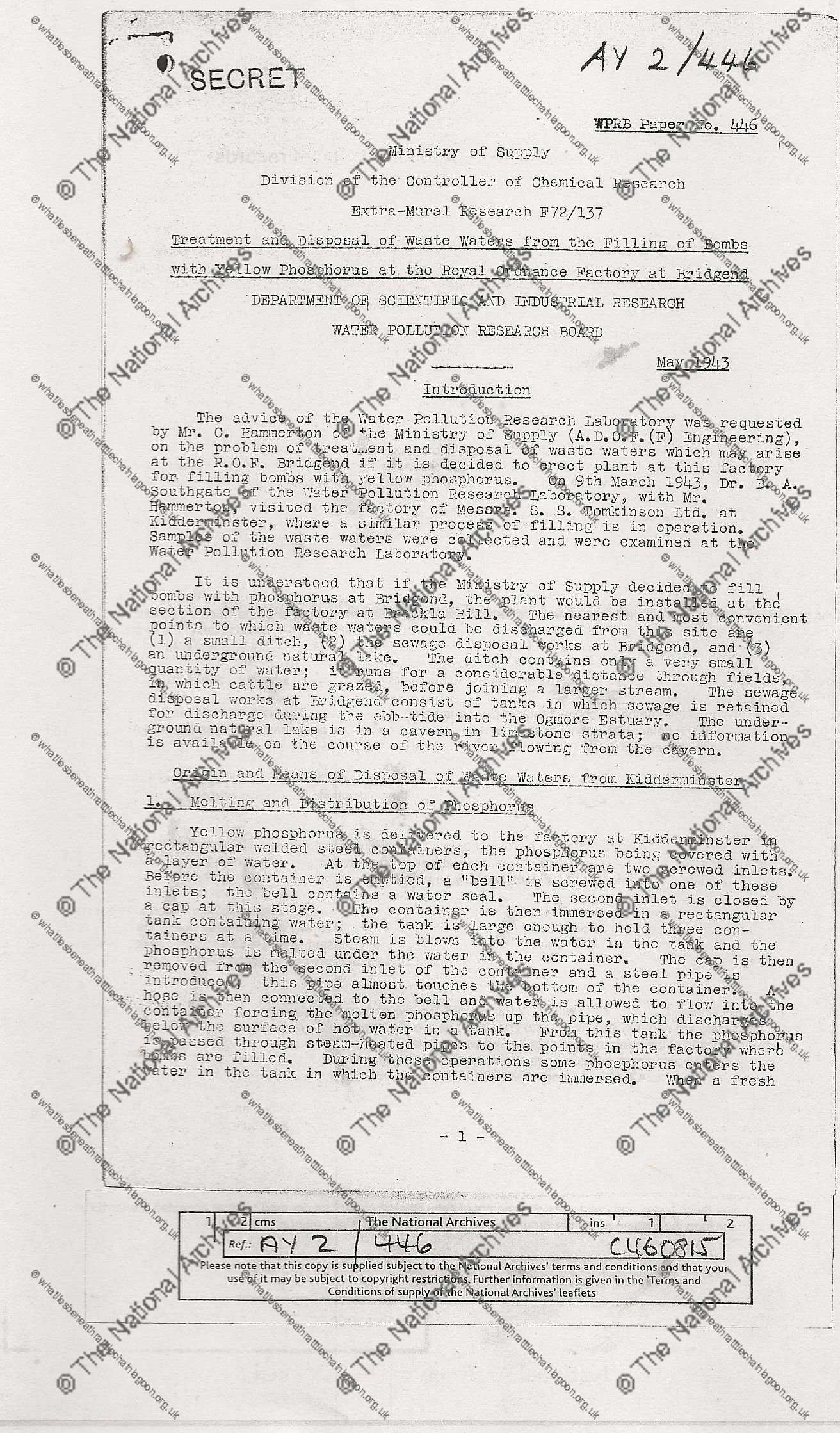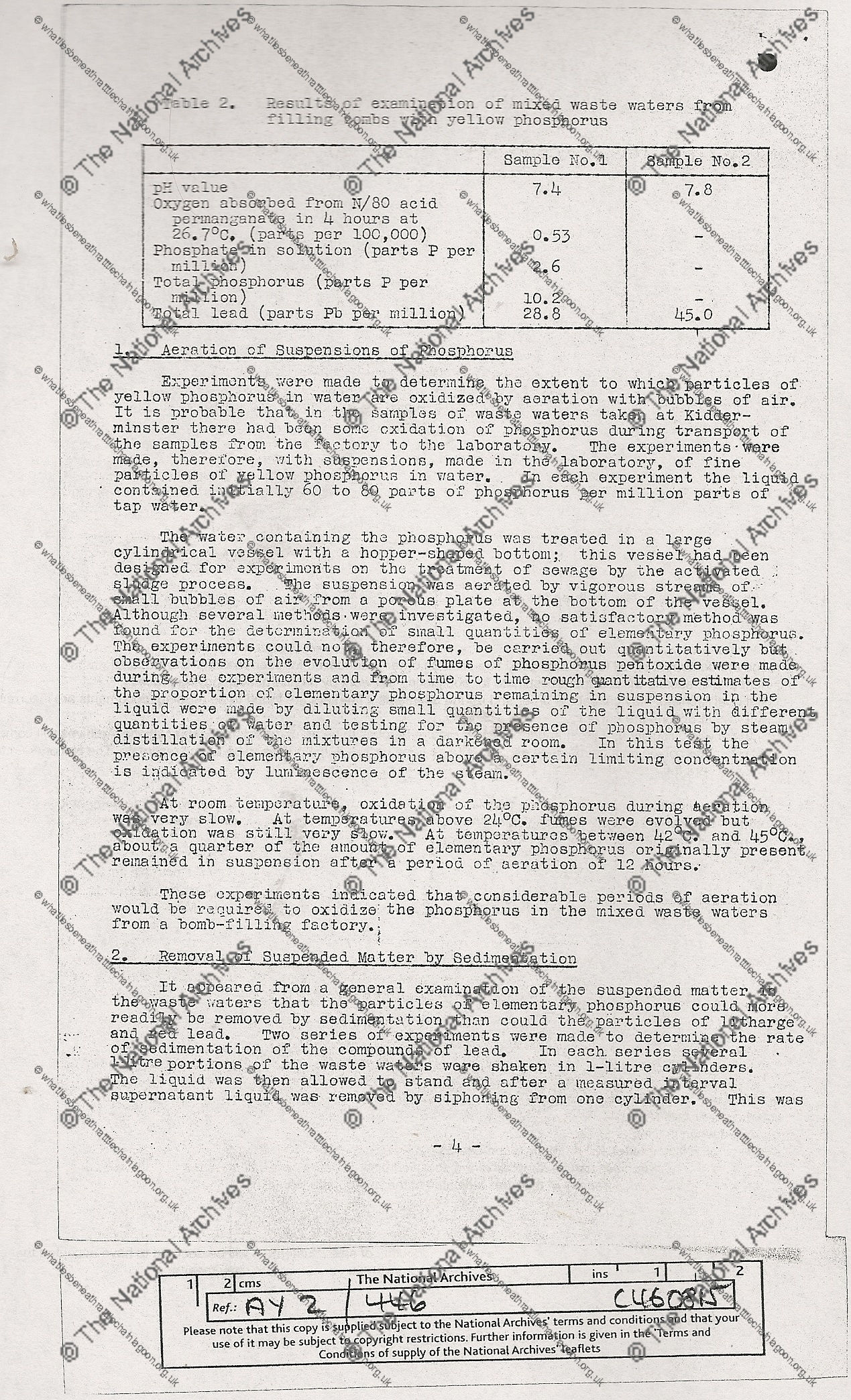THE TRUTH ABOUT ALBRIGHT AND WILSON’S WAR RECORD- THE PHOSPHORUS WASTES OF WAR.
Swanwatch has undertaken extensive research in trying to ascertain the truth about the role that this company actually played in terms of war time activities and weapon production at MoS Factory Oldbury, and highly relevant to the early history of Rattlechain lagoon, its potential animal, environmental and human health risks and the waste stream produced from these activities.
In Chapter 13 of his book Threlfall states “To meet the requirements of the services, 155,500 square feet of shops and buildings had been put up at Oldbury.. and since prudence compelled- and shortness of labour at Oldbury emphasised the compulsion- that A.& W’s munitions departments should be well spread, over 80,000 square feet of dispersal factory space had been occupied at West Bromwich (Kenrick and Jefferson), Kidderminster (Tomkinsons and Carpet Trades), Stourport (Bond Worth, and Lye (Timmis).”
Records at The National archives reveal a significant amount concerning the Tomkinson factory as it stood in 1943, which reportedly according to Threlfall, dealt with over eight million pounds of white phosphorus during the war.
Yellow phosphorus was delivered to the factory at Kidderminster in rectangular welded steel containers, the P4 being covered with a layer of water. The melting and distribution of the chemical, filling and testing of bombs all produced wastes containing water contaminated with white phosphorus. The total volume of this waste water from the filling of bombs was estimated to be 500,000 gallons per week, whereby it flowed to a single channel and then through a glazed earthenware pipe into a catch-pit 5-6’ deep outside the factory. “At the time of the visit to the works the catch-pit was nearly full of solid, the depth of water above the solid being only 8in. The solid was in the form of a soft brown material with a consistency similar to that of very soft mud. It contained some phosphorus, which rose to the surface and burned when the solid was stirred. There was so much solid in the catch-pit that little further deposition was occurring. After passing through the catch-pit the waste waters flow to a sewer and are treated in a mixture with sewage at the local sewage disposal works.”
Through detailed tests on samples of the slightly alkaline waste waters, it was found that they “contained considerable quantities of insoluble compounds of lead, together with particles of elementary phosphorus in suspension.” It was crucially further revealed that “these experiments indicated that considerable periods of aeration would be required to oxidise the phosphorus in the mixed waste waters from a bomb filling factory.”
National Archives AY2/446
Tests using aluminium sulphate, a compound used to remove suspended matter at water works, still yielded significantly high levels of lead, which it was acknowledged should it leak into a stream or watercourse, could lead to poisoning cattle and the public water supply should this method be used to try to treat the waste water.
NB A hole with a clay pit and a sewage works next to it were thus a recommended way of dealing with phossy water from bomb filling activities USED BY THIS COMPANY ON BEHALF OF THE MINISTRY OF SUPPLY FOR THE BRITISH GOVERNMENT.








